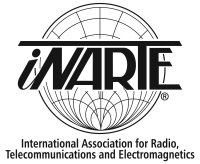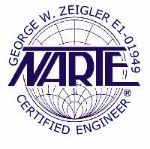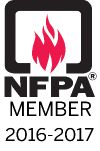Information Technology Equipment (ITE) Maintenance Awareness (Part 2)
All maintenance staff should have access to a record of equipment manufacturer bulletins and instructions. Only modern testing equipment, good tools, and the latest methods should be used. The following organizations have good reference material for any maintenance plan.
- Electrical and Electronics Engineers (IEEE)
- American National Standards Institute (ANSI)
- National Electrical Manufacturers Association (NEMA)
- InterNational Electrical Testing Association (NETA)
- National Fire Protection Association (NFPA)
A good preventive maintenance plan provides insurance against preventable failures that can completely destabilize an ITE installation.
Equipment diagrams
Electrical system data, diagrams and drawings are required during maintenance and testing of the electrical equipment. This can include information and data about protection devices and relays. This data is typically found in a short-circuit coordination study and generally includes all short-circuit values available in the power system, relays, and trip device parameters. Normally, this study is performed as part of the initial facility design, and then validated during the construction phase to ensure that the specified equipment and values have been met. When the facility is commissioned, this study should serve as a reference point. Any modifications that may have been made during the construction of the system would need to be incorporated to update the study for future reference.
System diagrams will generally be required for major systems. These diagrams may include a control and monitoring system, a lighting system, a ventilation system, a heating and cooling system, an emergency system and other systems. All system diagrams can be interconnected, such as electrical diagrams, fire and safety diagrams, emergency power supplies and hydraulic, pneumatic or mechanical systems. Each system may depend on the integrity of each related system within an installation. It is therefore important to understand how these systems interact and how they can be co-ordinated in a maintenance and testing program.
Accurate data on the power supply system is required to execute an effective service plan. This may include single line diagrams, short circuit coordination studies, wiring and control diagrams, and other data which can be used as a reference point for future maintenance and testing. These charts are intended to document and serve as an official record of circuit equipment and installation. NEMA has developed standards for diagram symbols, device designations and electric symbols. Typical diagrams and drawings are as follows:
- A process or flowchart is a conceptual diagram of the functional interrelationship of subsystems in pictorial form.
- A one-line diagram (single line) shows, through simple lines and graphic symbols, the flow of electrical energy or the course of electrical circuits and how they are connected. In this chart, physical relationships are typically ignored.
- The (basic) drawings show all circuits and components of the equipment. This diagram emphasizes the device elements and their functions, and it is always drawn with all devices shown in de-energized mode.
- A control sequence diagram (truth array) is a description of the contact positions or connections that are made for each control action position or device.
- A wiring diagram (connection diagram) locates and identifies electrical equipment, terminals and interconnect wires within an assembly. This diagram can show interconnection cabling through lines or terminal designations.
- The interconnection diagrams show only the external connections between the controllers and associated equipment or between various housing units of a set of switching apparatus.
- Circuit layout and routing diagrams show the physical layout of the facility and equipment and how the circuit of the various equipment functions.
Test forms
Preparing and filing all inspection and test records is a key component of an effective maintenance and test program. This enables mathematical trends to be established and, to a large extent, future performance and maintenance measures to be predicted. The forms allow the orderly recording of data and are a reminder to record all relevant factors such as temperature and relative humidity. A variety of forms are available in the industry, or they can be tailored to the needs as needed.
Electrical classification is one of the original inspection or testing procedures. All successive tests for this device would be classified in chronological order with the most recent test on top. The important fact is that records must be retained (in whatever order or format is appropriate) for comparison and evaluation.
All effective maintenance services should have forms available to their staff. A data file consisting of consistent documentation is an integral part of every service. Equipment manufacturers are able to obtain test forms and procedures for specialized equipment. Please note that forms may be produced to cover any set of unique circumstances that a qualified maintenance crew may face. These forms can only be included as samples and must not be considered as the only available specimen.
Personnel qualifications
Maintenance personnel are to be chosen based on the qualifications required for the position. Assignments should not be made on a case-by-case basis to people who are currently inactive. The equipment may be ruined by overzealous and inexperienced staff. The maintenance department must not be a relay for personnel who can't adapt elsewhere. The complexity of control systems in automatic and semi-automatic installations requires a well-trained and qualified staff in the maintenance department. In many cases, due to the novelty and complexity of maintenance requirements, special training may be required. A qualified maintenance force should be kept informed of the latest technology and developments in the field. This can be done by visiting facility maintenance exhibits, subscribing to appropriate periodicals and attending specialized courses, group discussions and lectures.
Additional personnel with a greater level of technical training and specialized skills should be added to the workforce as required. When problems cannot be located, maintenance must call a manufacturer's service representative, which is usually cheaper in the long run.
Researching the root cause of the failure with inexperienced personnel attempting to repair or maintain ITE equipment can take hours to locate the problem. With inexperienced personnel, it is possible that the repair is more expensive than replacing the equipment. Inexperienced personnel could disrupt or modify settings that only a factory trained service representative can restore. The inexperienced personnel, and their actions can affect the reliability of the equipment or even the entire system. It is also possible to further damage the device and incur additional expenses because of the experimentation or attempt to keep the equipment running when it should be repaired. By using a manufacturer's representative, service personnel can gain a considerable amount of knowledge if they are present when the representative is working on the equipment. After a few service calls, the maintenance person may know enough about the equipment to repair and maintain it himself in the future.
Some guidelines must be followed when choosing an external aid to contribute to a maintenance plan. Of course, it is possible to outsource all levels of responsibility for maintenance and testing.
There are certain advantages to using contractor help.
- The testing and maintenance firm may function as an impartial testing authority, independent of the manufacturers, suppliers and installers of equipment or systems evaluated by the testing firm.
- The testing and maintenance company can maintain a level of expertise that internal staff may have difficulty acquiring and maintaining on a cost-effective basis.
- The testing and maintenance firm may be required to utilize only full-time technicians who are regularly employed by the firm. Non-electrically qualified employees are not allowed to perform tests or help of any kind. Electricians and/or linemen may assist, but may not perform tests and/or inspection services.
- The test and maintenance company may provide all test equipment which may be required for any level of maintenance.
- Test equipment supplied by an outside company can be inspected and calibrated in accordance with established industry standards.
The drawbacks associated with using a contractor are as follows.
- There can be many drawbacks associated with the maintenance plan of any sensitive electrical system or, by the way, any system. There is, however, one drawback that can overwhelmingly outweigh any benefit.
- The testing and maintenance enterprise is not sensitive to the intrinsic critical needs of the customer, nor can it be motivated to be sensitive to them.
Dedicated maintenance equipment
The maintenance equipment required to support, service, troubleshoot and maintain the ITE system is sensitive and sophisticated. A well-organized maintenance department will have or easily access to all test equipment required to support its mission. Test equipment may be purchased and kept on site or leased by an outside supplier. The test equipment can be provided by a contracted service agency. The manufacturers of the ITE system equipment being maintained should be consulted when selecting test equipment.
Maintenance and test equipment that is used to maintain other equipment must also be maintained and maintained on a regular basis to ensure its reliability and accuracy. The test equipment should be maintained by a qualified company and a calibration schedule established to maintain the design accuracy of all applicable test instruments. The precision must be traceable to the National Standards Office in a continuous chain.
Instruments must be calibrated as per the following frequency schedule.
- Field Instrumentation – 6 months maximum.
- Laboratory Instrumentation – 12 months.
- Specialized equipment leased – 12 months.
- All test equipment must be equipped with dated calibration labels.
- Records must be maintained and indicate the dates and results of all instruments calibrated or tested.
- A current instrument calibration statement and procedure will be maintained for each test instrument.
- Personnel assigned to operate this equipment must be fully trained in their effective and safe use.
« Back to Blog






Comments